We’re back with another week of the PLV report. This series will use the PLV metrics to contextualize player performance, and this week we’ll use our PLV model to analyze some of the best rookie pitching performances of the season. Nick’s primer on PLV from last year can be found here.
PLV allows us to dig into individual pitches as needed, or to analyze how a pitcher’s repertoire works holistically. When showing Pitch Type cards, there will also be a plvLocation+ score shown, which is modeled similarly to PLV, but only uses the end locations of the pitch (horizontal, vertical, and location within the specific hitter’s strike zone) as inputs.
This week, I’m going to exclusively look at the Chicago White Sox, and try to make sense of their season. It has been objectively terrible (their .224 Win% is below replacement level, thanks to -6.2 Hitter WAR), but I’ll take a look at some interesting players to see how much of that is earned, how much of it is luck, and if there are any bright spots.
Note: PLV metrics listed are current through Wednesday, September 12.
No better place to start than with the anchor of the White Sox hitters. Maldonado returned -1.5 WAR across 147 PA, which is roughly a -6.1 WAR/600 PA pace. For reference, that pace would offset Elly De La Cruz’s pace this season (6.2 WAR, across 631 PA). That’s a truly horrific return, but thankfully (for Maldonado’s attempts to sign with a different team), he’s been unlucky. At the surface level, he’s underperforming his xwOBA by 20 points (though the xwOBA is still only .208). The problem is that xwOBA is pretty consistent: he hasn’t hit a .300 wOBA or xwOBA. A point in his favor is that Process+ is even rosier than wOBA or xwOBA. A 72 Process+ is still really bad, but it isn’t “worst hitter in baseball” caliber, either.
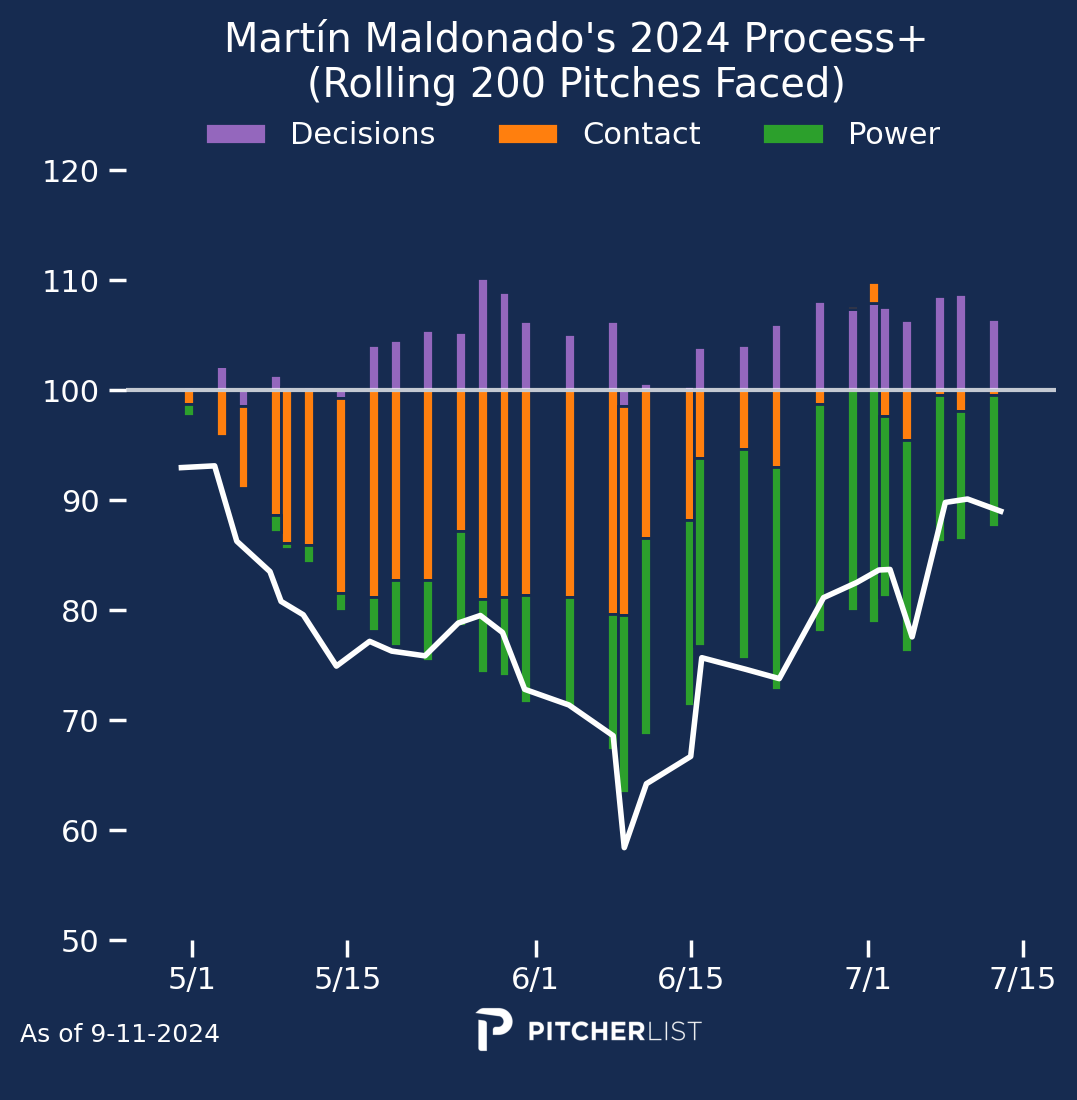
His Decisions will boost his floor a bit, but his Contact and Power will keep him from hitting much higher than that floor. For a catcher, that’s bad, but can be playable. The biggest problem for Maldonado is that he paired terrible hitting results with subpar defense as well. His merely “bad” underlying metrics give some hope for a rebound, but I don’t see why a team should take a shot on a catcher whose upside is a “minus hitter who is also a minus defender”.
I’ve been buying Vaughn wherever I can this season. He’s another hitter underperforming his xwOBA (.303 wOBA vs. a .326 xwOBA). A major difference between him and Maldonado above is that Vaughn’s wOBA is actually… useful. That .326 xwOBA is in the 65th percentile and is even playable at a position with as high of an offensive threshold as first base. The xwOBA gives us some hope, but Process+ has really been what’s driving my interest.
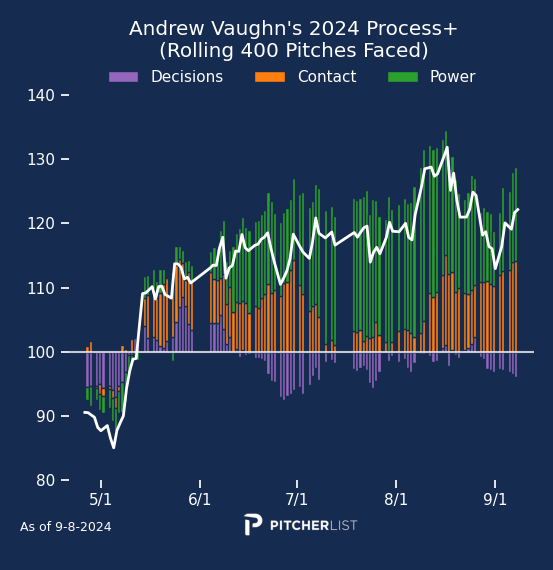
Vaughn’s Decisions have been fine. Sometimes helpful, sometimes not, but never very far from average. The interesting part is everything else. Vaughn has started making lots of Contact, and making valuable contact at that. Then you add in that he’s been hitting the ball harder at more useful launch angles, and there’s a lot to like about his underlying profile. There hasn’t quite been the progress I’ve seen in his batted ball profile (both results and xStats), but the PLV metrics line up with a hitter who profiled with plus tools for both Hit and Power.
Lopez is a player who would’ve had his time in the sun in a prior era. He’s a one-tool player, and that tool is not striking out. That can be impactful if you can at least flirt with an extra-base hit every now and then. Unfortunately, Nicky is not the flirtatious type, as evidenced by his .056 ISO (worst in MLB, and a full .014 below Luis Arraez, who is a great example of someone who can actually make this profile work). His Process+ chart backs this up, as you can see that he pairs good decision-making with good generally positive Contact ability, all of which is consistently sunk by his woeful Power.
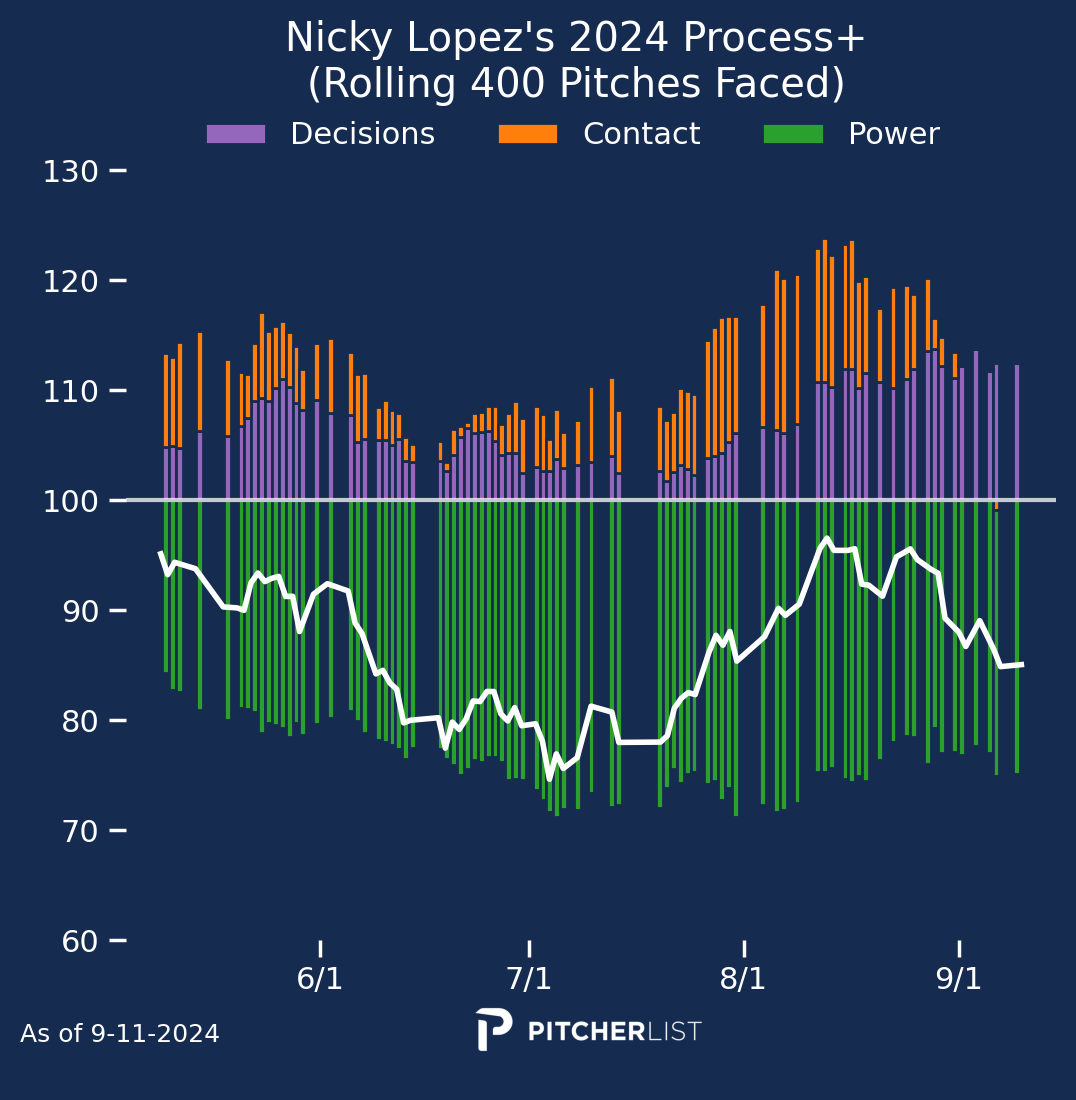
Unlike the players mentioned above, Lopez plays useful defense. He’s the first player mentioned who has actually performed above replacement level, thanks entirely to his defense (even his baserunning is slightly minus). The saying is defense doesn’t slump (which I think might not be fair, but that’s an article/research project for another day), but relying entirely on your defense when it isn’t Gold Glove-caliber is a dubious proposition. The black hole that is his spot in the lineup is tough to overlook, even if it doesn’t totally ruin his value.
Obligatory Tommy Pham mention, as he’s the only White Sox hitter with more than 100 PAs and a wRC+ above 100. Astute readers will also note that he is no longer on the White Sox, as they (smartly) traded him to St. Louis in the (not-so-smart) Michael Kopech three-team deal at the trade deadline.
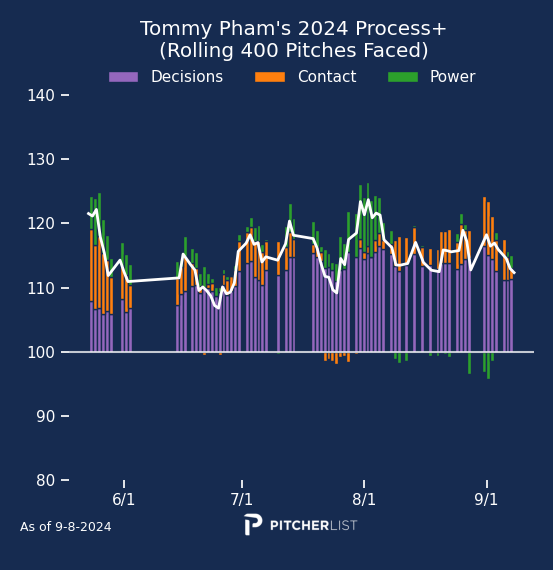
Pham is the epitome of a “high-floor bat”. He makes very good swing decisions, and that allows him to succeed with pretty generic Contact and Power values. He’s a perfectly cromulent bat: 55th percentile wOBA (.314), 55th percentile K% (20.8%), 55th percentile BB% (8.3%), and 55th percentile Solid Contact% (6.4%).
Another former top prospect who isn’t meeting expectations this season. Unlike with Vaughn, I don’t see a ton of room for improvement with Benintendi. His batted balls have earned poor results (.287 wOBA; 24th percentile), but they’re validated by the underlying contact quality (.291 xwOBA; 28th percentile). Some potential hope may be that Process+ likes what Benintendi has done this season. His Decisions have ebbed and flowed, while he’s maintained good Contact and poor Power.

The problem is that Benintendi’s spray chart is basically a “what not to do” diagram: he heavily pulls his ground balls, which are easy outs, and he sprays his flyballs everywhere except down the foul lines, where they’d do the most damage. There’s some hope for improvement, but it might just be another situation like Pham: the second he becomes good (or even just average), the best decision for the organization is to trade him away from Chicago for prospects.
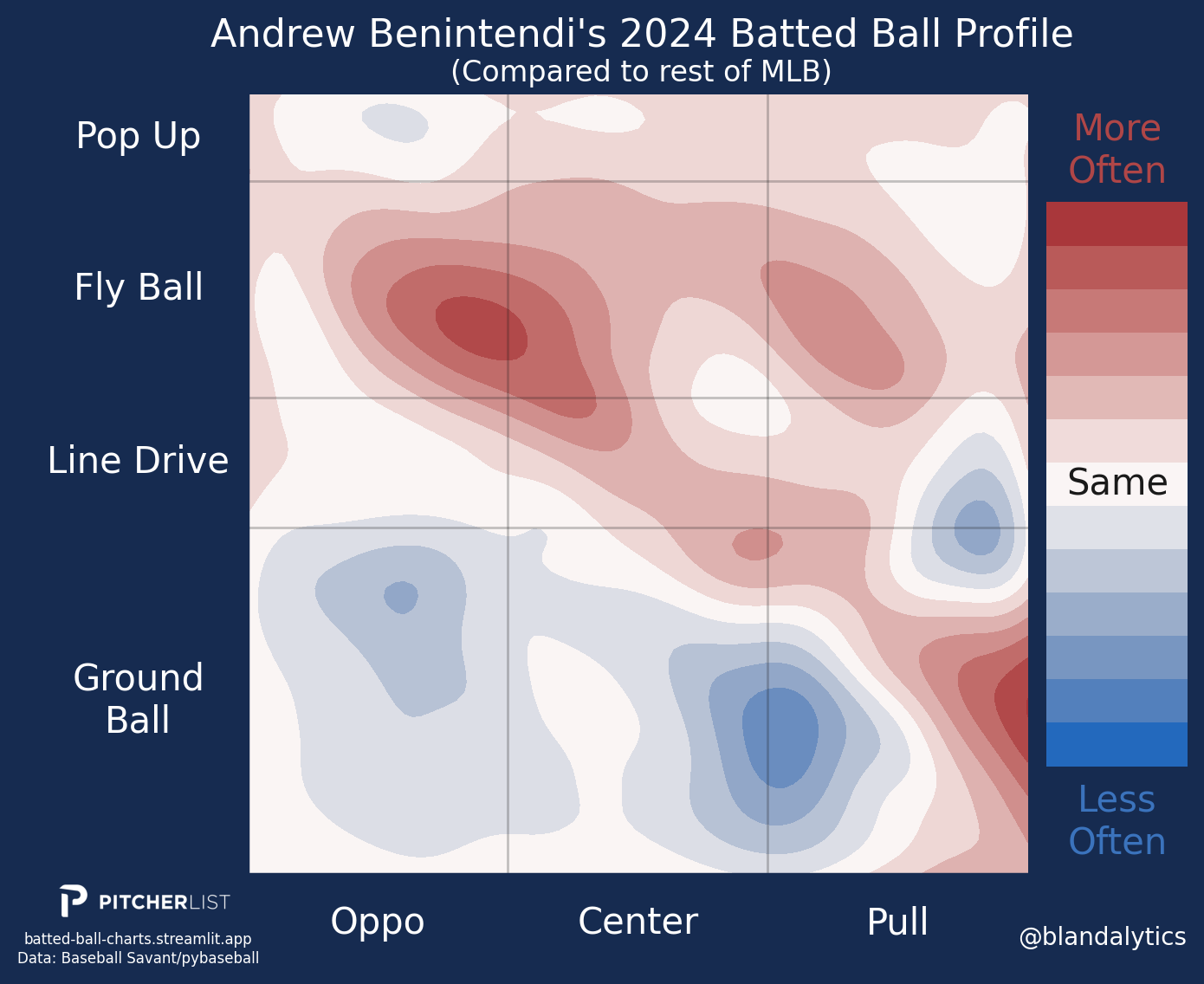
Thorpe’s changeup may be the best single pitch of any White Sox starter. It’s earned an elite 20.7% SwStr% (90th percentile), while also limiting damage (.295 xwOBAcon; 69th percentile), both of which are backed up by impressive prospect grades (70 grade by FanGraphs). It has been and will be a very good pitch for him, especially while it retains its outlier IVB (13.2″; 99th percentile).
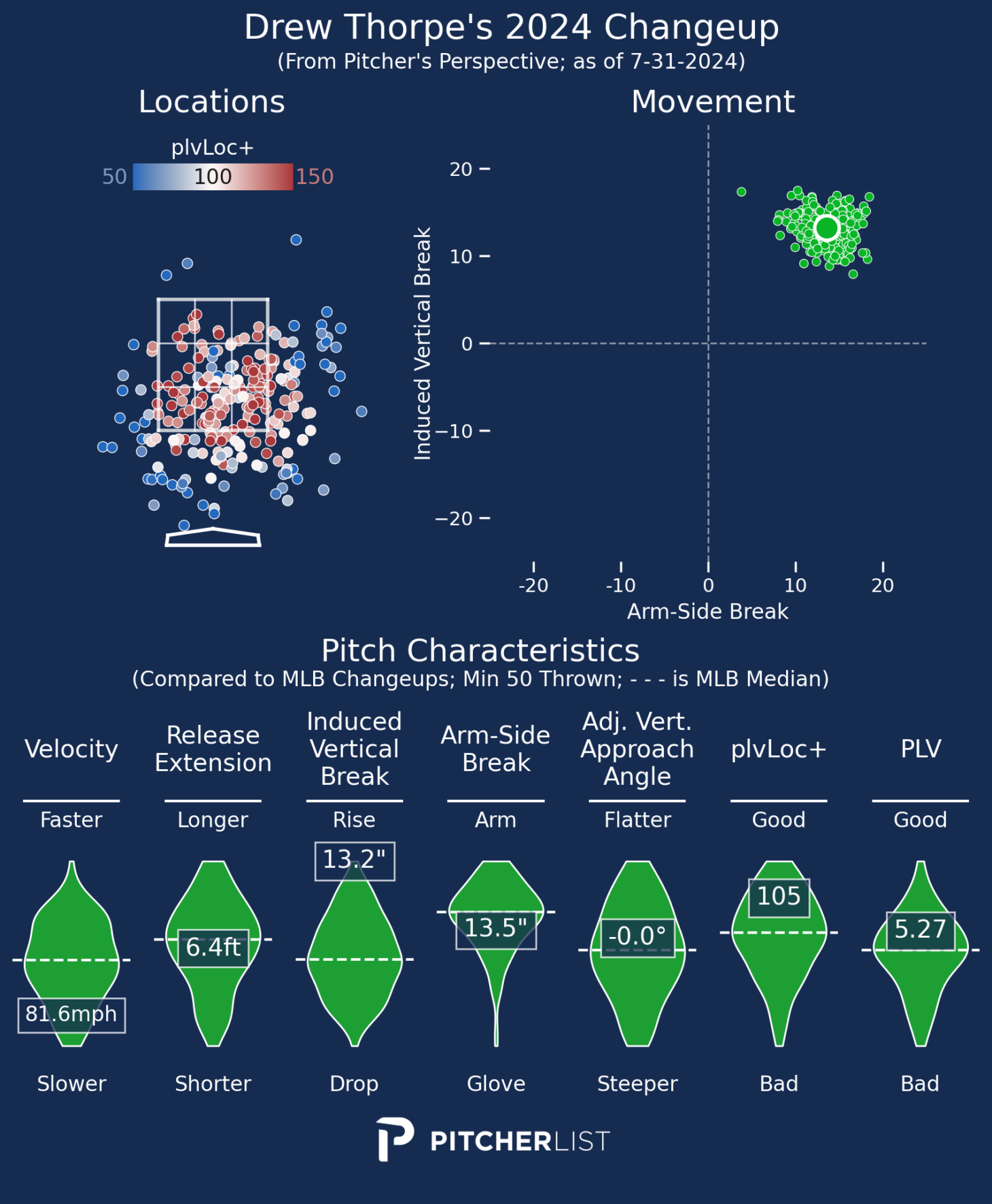
The problem, unfortunately, is everything else. His four-seam fastball is very, very bad (4.71 PLV; 17th percentile), thanks to extremely mediocre shape (16″ IVB and 5″ Horizontal Break; 70th percentile and 18th percentile) and poor velo (91 mph; ninth percentile). It’s not quite as bad as it seems, though. PLV will also ding you heavily if you don’t throw strikes, and Thorpe has received glowing Command grades (60 present/70 future from FanGraphs), even if they didn’t show up this season (41.7% Zone%; 7th percentile). A changeup-focused right-handed pitcher will always have struggles, but if the command can reach anything approaching those prospect grades, I think Thorpe will be a useful pitcher.

Nominative determinism is hard at work with Cannon (even if his velo doesn’t quite line up). He’s a pitcher I’ll be looking at a lot next season, as Cannon has four above-average pitches (per PLV), and his extreme East-West movement profile is giving shades of Logan Webb. Cannon’s pitches have a bit more IVB than Webb’s (which might be harmful in this case), but this seems like the profile of someone who can limit hard contact.
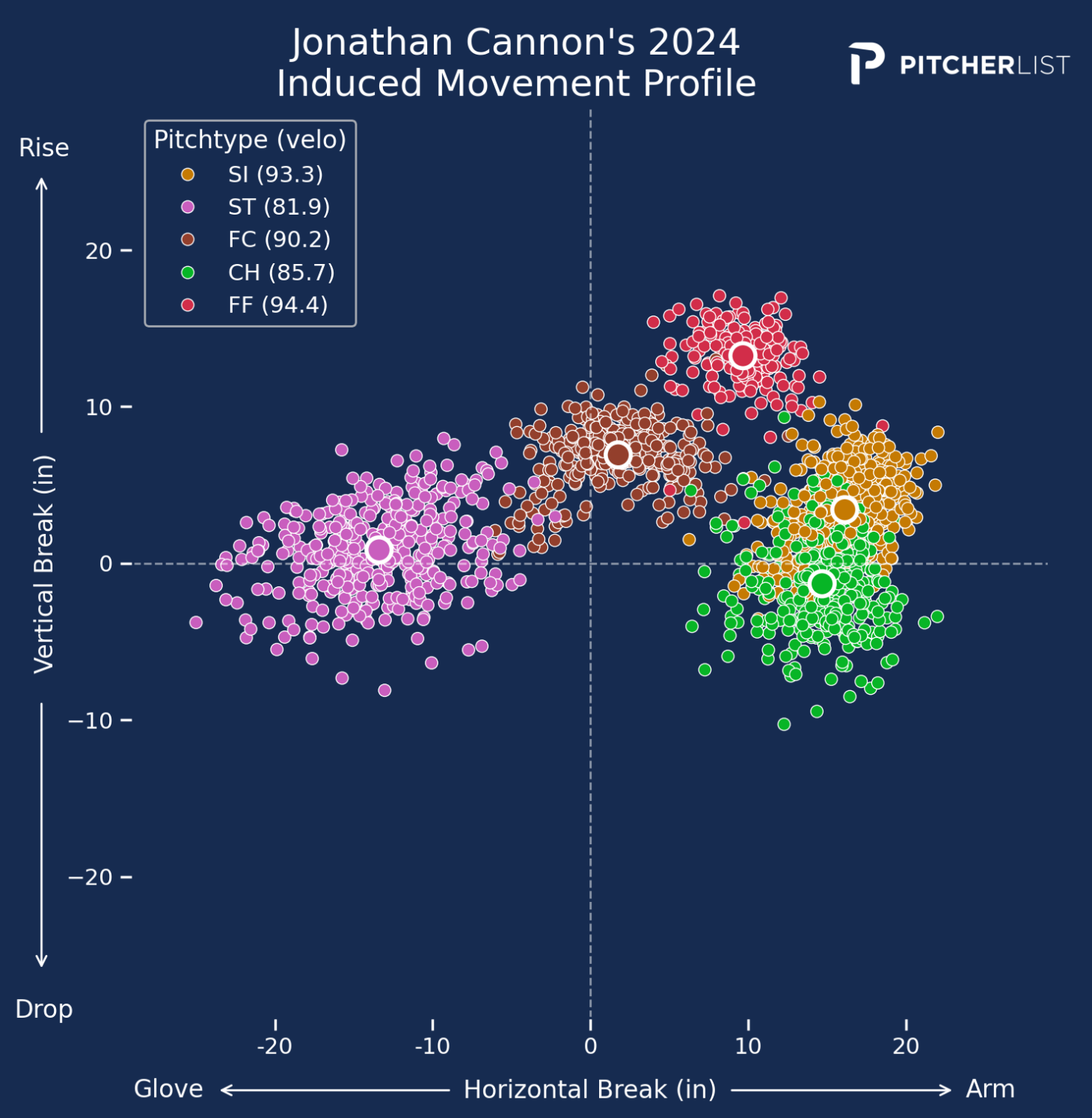
The issue is that the results don’t reflect that at all. Cannon has a GB-heavy movement profile but is returning a measly 41.2 GB% (33rd percentile; Logan Webb is 60.2%, for context). A possible fix might come from having a different location cue for the sinker. He locates it outside to hitters 46.3% of the time (91st percentile). So he’s never jamming them inside, and he rarely pitches up (23.2% hiLoc%; 30th percentile). That means that the pitch is moving in plane with the bat and can get taken for a ride (.444 xwOBAcon; 19th percentile), while it also isn’t being thrown up in the zone where it might steal some whiffs (12.5% Whiff%; 50th percentile). Whether in fantasy or reality, Cannon should come cheap, and I’d be taking a flyer on him to see if he can make some tweaks to unlock his movement profile.
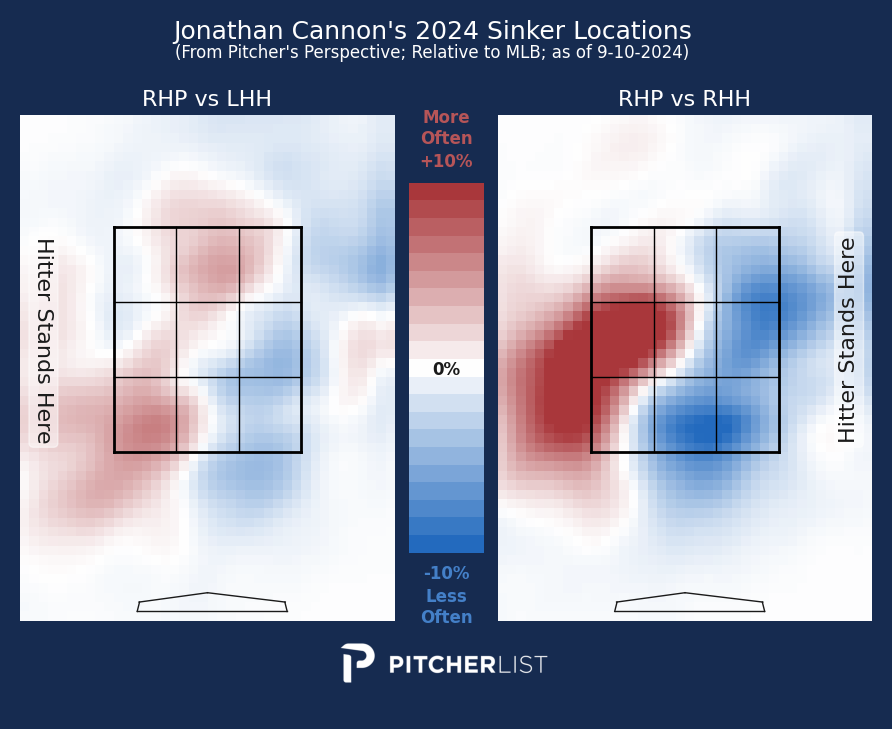

Pham has good top end exit velos, so I wonder why his power score is so mediocre?